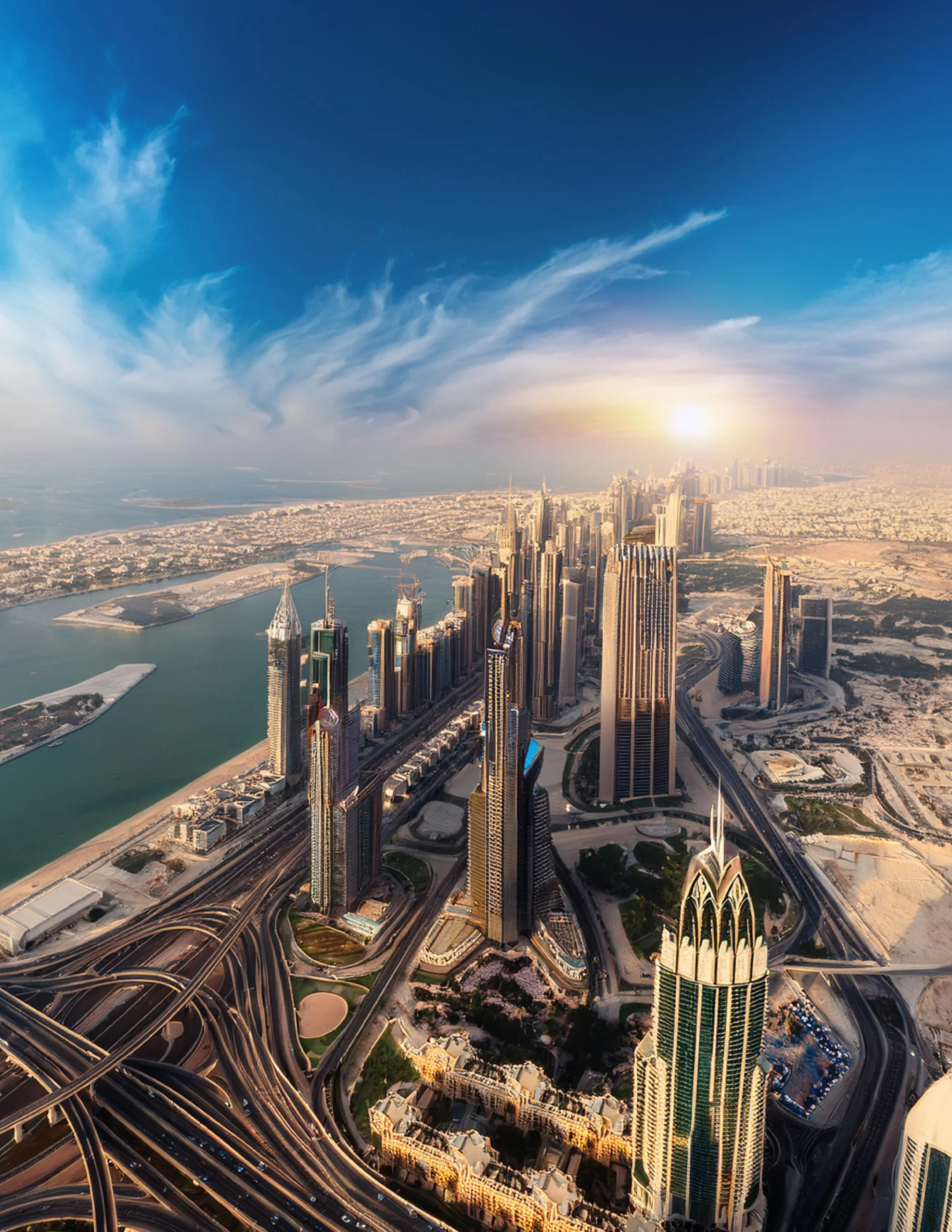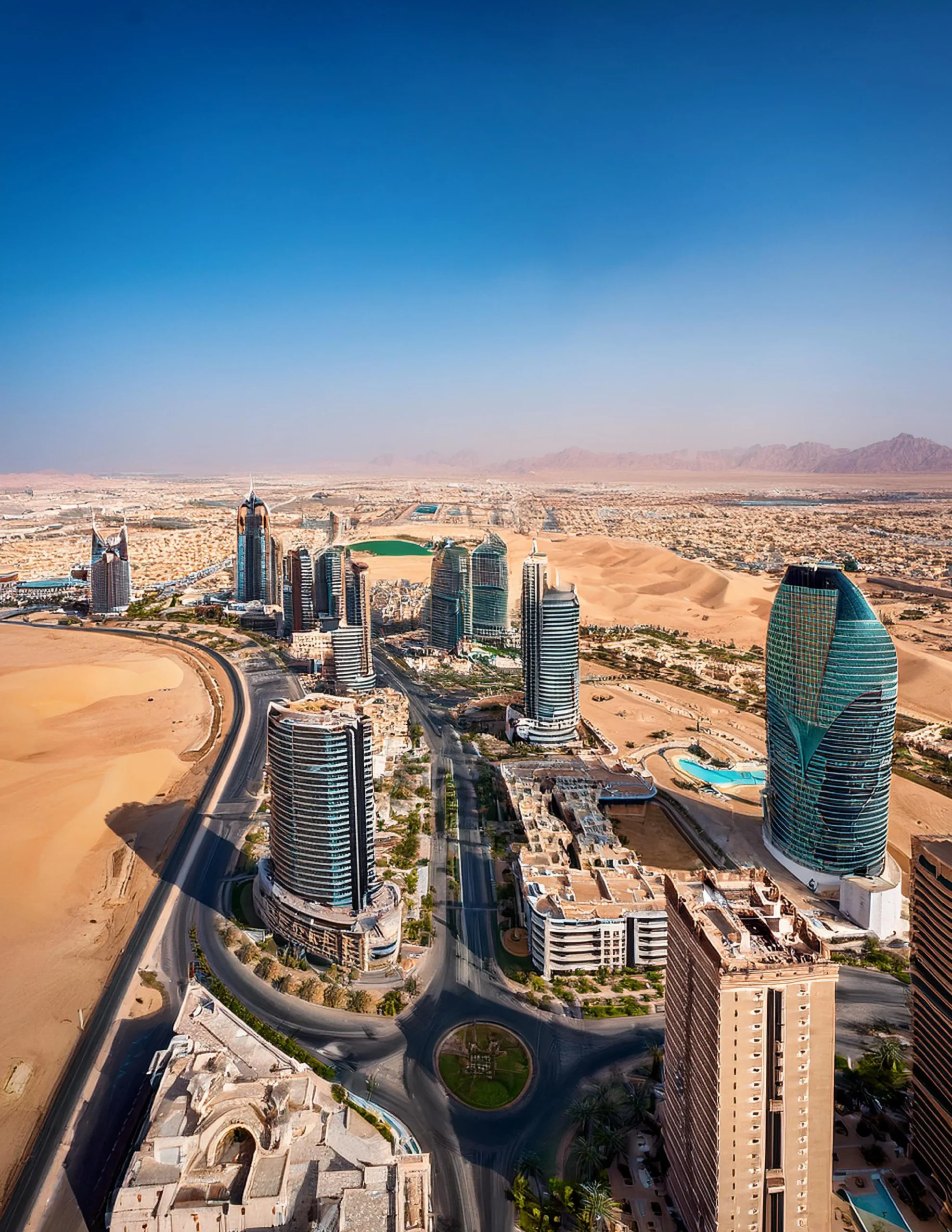Key Themes Shaping the Middle East Outlook Into 2025
Key Themes Shaping the Middle East Outlook Into 2025

As the Middle East navigates a dynamic global landscape, several key themes are poised to shape its socio-economic and geopolitical trajectory into 2025. This article delves into four critical areas that stand out as transformative forces: APAC-Middle East synergies beyond energy, Saudi Arabia’s strategic rightsizing of project spending, the implications of lower U.S. Federal Reserve rates on USD pegs, and the burgeoning role of sovereign wealth funds (SWFs) in supporting long-term vision strategies. Together, these factors provide a comprehensive lens into the region’s evolving landscape.
1. APAC-Middle East Synergies: Beyond Energy
The Asia-Pacific (APAC) region and the Middle East have long shared a mutually beneficial relationship, largely driven by energy trade. However, the narrative is shifting beyond hydrocarbons toward diversified investments, trade agreements, and human capital exchanges.
Trade and Investment Growth
China and India, the APAC giants, are deepening economic ties with the Middle East. The UAE, Saudi Arabia, and Qatar have signed comprehensive economic partnership agreements with countries like India and South Korea, fostering trade in goods, technology, and services.
Chinese Belt and Road Initiative (BRI) investments continue to anchor these synergies. The Saudi Vision 2030 framework has witnessed significant Chinese capital inflows into renewable energy, digital infrastructure, and logistics projects. Similarly, India has intensified partnerships across ports, healthcare, and the tech sectors, underscoring a shared vision for economic growth.
Human Capital Exchange
The Middle East’s demographic challenges, characterized by skill shortages in high-tech industries, are being addressed through APAC partnerships. Countries like the UAE are creating visa pathways for highly skilled professionals from India, the Philippines, and South Korea to contribute to innovation-driven sectors. Collaborative educational programs between APAC and Middle Eastern universities also aim to enhance human capital development.
Beyond Bilateralism
What sets this phase apart is the transition from bilateral agreements to multilateral initiatives. Organizations like the Indian Ocean Rim Association (IORA) and the Shanghai Cooperation Organization (SCO) are emerging as platforms for economic diplomacy, connecting APAC economies with Middle Eastern stakeholders.
2. Saudi Arabia’s Rightsizing of Project Spending
Saudi Arabia’s Vision 2030 has been synonymous with grand infrastructure projects and transformative ambitions. Yet, as the Kingdom matures in its execution strategy, it has begun “rightsizing” project spending to prevent overheating its economy and maintain long-term sustainability.
Preventing Economic Overheating
During the early phases of Vision 2030, the Kingdom allocated massive budgets to megaprojects like NEOM and The Red Sea Project. However, the aggressive pace of investment created inflationary pressures on local supply chains, labor costs, and construction materials. Recognizing these risks, Saudi Arabia has recalibrated its spending to align with economic realities and mitigate overheating.
Focus on Priorities
The government’s approach now emphasizes strategic prioritization. While flagship projects like NEOM retain their prominence, there is a heightened focus on completing projects already underway and scaling back secondary initiatives. This strategy aims to ensure quality delivery and avoid resource dilution.
Impact on Private Sector
Rightsizing has also been a catalyst for greater private-sector participation. With reduced government-led spending, private entities are stepping in to co-fund and manage infrastructure projects. Public-private partnerships (PPPs) have become a cornerstone of Saudi Arabia’s economic strategy, fostering a more diversified and resilient growth model.

3. Lower Fed Rates and USD Pegs: Implications for Banking
The Middle East’s monetary policies are closely tied to the U.S. Federal Reserve due to currency pegs to the U.S. dollar. As the Fed pivots to lower interest rates, the region faces significant economic and banking sector implications.
Easing Monetary Pressures
Lower Fed rates reduce the cost of borrowing across the region, providing a much-needed reprieve for businesses and individuals. Gulf Cooperation Council (GCC) economies benefit from this easing, particularly those with USD pegs, as it alleviates liquidity constraints and supports economic growth.
Banking Sector Dynamics
However, lower rates also create challenges for banks in the form of thinner net interest margins. Regional banks are turning to non-interest income streams such as wealth management, insurance, and fintech innovations to counter this. Some banks are leveraging these headwinds as opportunities to expand their retail banking footprints and attract new customers with competitive lending rates.
Currency Stability
The USD peg remains a cornerstone of economic stability for GCC nations, particularly in a volatile global environment. Despite lower Fed rates, policymakers are unlikely to decouple from the dollar, given its role in ensuring currency stability and investor confidence. Instead, central banks in the region are deploying tools such as open market operations to balance liquidity while maintaining peg stability.
Regional Winners
Banking sectors in the UAE and Qatar are well-positioned to outperform in this environment. Both countries have implemented proactive fiscal policies that complement monetary easing, enhancing their ability to attract foreign capital and sustain banking profitability.
4. Sovereign Wealth Funds: Central to Vision Strategies
Sovereign wealth funds (SWFs) are emerging as the linchpin of the Middle East’s economic transformation. These funds, managing trillions of dollars in assets, are at the forefront of supporting vision strategies across the region.
Amplifying Economic Diversification
SWFs like Saudi Arabia’s Public Investment Fund (PIF), Abu Dhabi Investment Authority (ADIA), and Qatar Investment Authority (QIA) are driving diversification into non-oil sectors. From renewable energy and technology to entertainment and logistics, these funds are channeling investments into projects that align with long-term growth goals.
Global Bankability
The ample financial resources of SWFs make them attractive global investment partners. They are not only funding domestic megaprojects but also acquiring strategic assets abroad. For instance, PIF’s stake in global tech companies and ADIA’s investments in infrastructure projects across Europe and Asia demonstrate the Middle East’s growing influence on global markets.
Catalyzing Innovation
SWFs are increasingly funding venture capital and innovation-driven enterprises. The UAE’s Mubadala and PIF have launched dedicated funds targeting emerging technologies like artificial intelligence, biotech, and renewable energy solutions. These investments position the Middle East as a hub for innovation and attract global talent and capital.
Social and Environmental Mandates
In addition to economic goals, SWFs are aligning their strategies with environmental, social, and governance (ESG) principles. Investments in green energy projects and social infrastructure underscore their commitment to sustainable development, enhancing their global reputation and long-term viability.
Conclusion: A Region in Transformation
The Middle East’s outlook into 2025 is shaped by a confluence of global and regional dynamics. APAC-Middle East synergies are redefining trade and human capital relationships, while Saudi Arabia’s rightsizing strategy ensures sustainable economic growth. Lower Fed rates and USD pegs provide both opportunities and challenges for the region’s banking sectors. Meanwhile, sovereign wealth funds continue to anchor the Middle East’s economic diversification and innovation ambitions.
Collectively, these themes highlight a region that is not only adapting to global shifts but also proactively shaping its future. By balancing bold ambitions with pragmatic strategies, the Middle East is charting a transformative path that promises resilience, growth, and a more diversified economic landscape.
Lorem ipsum dolor sit amet, consectetur adipiscing elit. Ut elit tellus, luctus nec ullamcorper mattis, pulvinar dapibus leo.
